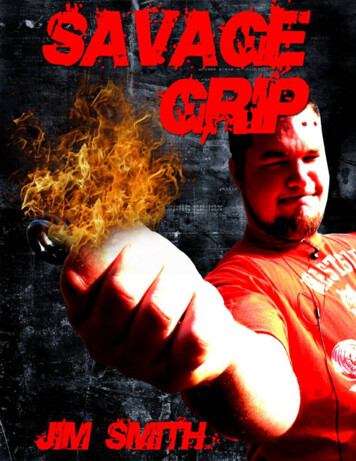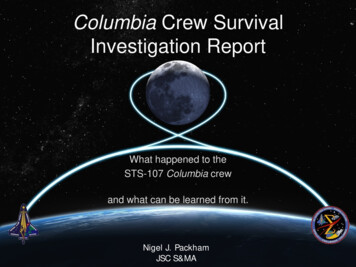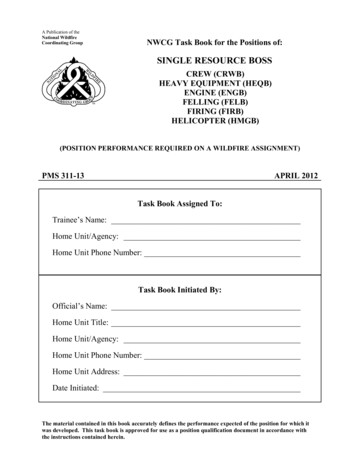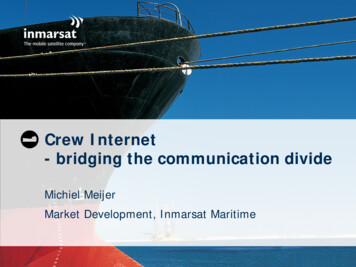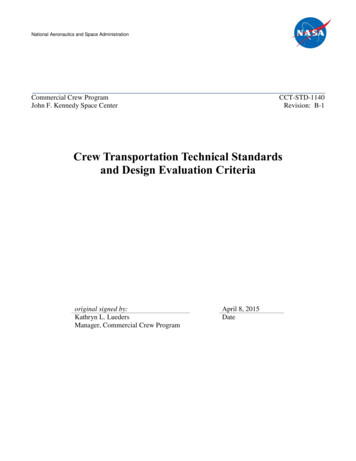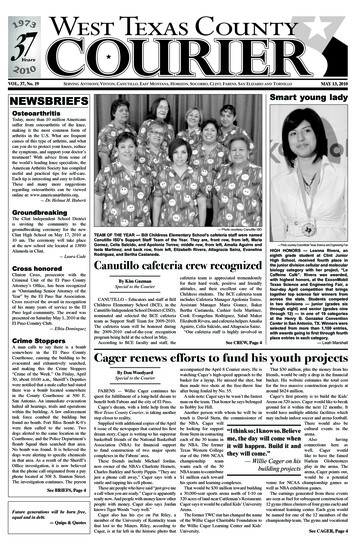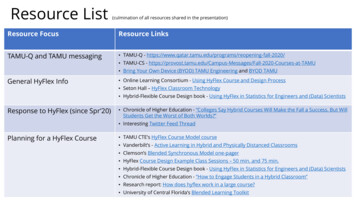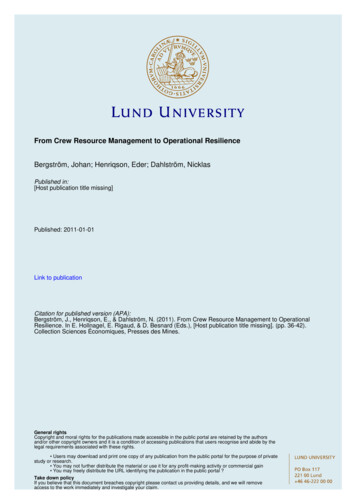
Transcription
From Crew Resource Management to Operational ResilienceBergström, Johan; Henriqson, Eder; Dahlström, NicklasPublished in:[Host publication title missing]Published: 2011-01-01Link to publicationCitation for published version (APA):Bergström, J., Henriqson, E., & Dahlström, N. (2011). From Crew Resource Management to OperationalResilience. In E. Hollnagel, E. Rigaud, & D. Besnard (Eds.), [Host publication title missing]. (pp. 36-42).Collection Sciences Économiques, Presses des Mines.General rightsCopyright and moral rights for the publications made accessible in the public portal are retained by the authorsand/or other copyright owners and it is a condition of accessing publications that users recognise and abide by thelegal requirements associated with these rights. Users may download and print one copy of any publication from the public portal for the purpose of privatestudy or research. You may not further distribute the material or use it for any profit-making activity or commercial gain You may freely distribute the URL identifying the publication in the public portal ?Take down policyIf you believe that this document breaches copyright please contact us providing details, and we will removeaccess to the work immediately and investigate your claim.LUNDUNIVERSITYPO Box11722100Lund 46462220000
From Crew Resource Management to Operational ResilienceJohan Bergström1 , Eder Henriqson2 and Nicklas Dahlström3Lund University Centre for Risk Assessment and Management, PO-Box 118,SE-22100, Lund, SwedenJohan.Bergstrom@lucram.lu.sePontifical Catholic University of Rio Grande do Sul, Faculty of Aeronautical Science,Ipiranga Avenue, 6681, Building 10/106, 90619-900, Porto Alegre, Brazilehenriqson@pucrs.br3Emirates Airlines, Flight Training Department, PO Box 28 444, Dubai, UAEnicklas.dahlstrom@emirates.com12Abstract. This paper questions the correspondance between resilienceengineering theory and the theoretical fundaments of traditional CRMtraining, with its related behavior assessments. Reviewing the theoreticalroots of CRM it is concluded that such concepts are rather founded in theinformation processing paradigm hiding the complexities of adaption torapidly changing situations. An alternative approach to team training andteam performance assessment, called Operational Resilience, isintroduced. Operational Resilience is rooted in complexity theory and intheorizing cognition as a distributed phenomenon. The most importantprinciples of Operational Resilinece are the focus on processes ofcoordination and control rather than behaviors, analysis of emergentinteractions in multi-professional settings, focus on local production ofmeaning instead of normative accounds of situation awareness (or similarconstructions), and finally analysing how to bridge the gaps caused by theinherent system complexity instead of counting and categorizing errors.1 INTRODUCTIONRecent contributions on the topic of Resilience Engineering have developed newconcepts and methodologies for training organizational resilience. In general terms,these concepts have been focused on the understanding of people’s adaptative capacityto cope with complex working situations (Dekker, 2006; Nemeth, 2008). Methodologiesof RE are still been developed in parallell with the adaption of some conventionalmethodologies (e.g. team training, risk assessment methods, crises management plans),
Feuille de style2in order to provide various safety-critical industries with techniques to introduceresilience thinking in practice (Hollnagel, Paries, Woods & Wreathall, 2011).In the wake of the development of Resilience Engineering the experience of CrewResource Management (CRM) training, firstly in aviation, and secondly in healthcare,has been identified as a conventional training practice with potential for improvingorganizational resilience in highly complex technological settings, consideringdimensions at thel level of the individual (e.g. leadership skills), team (e.g.communication, coordination), and the organization (e.g. safety culture) (Bergström,Dahlström, Henriqson & Dekker, 2010; Dekker & Lundström, 2007; McManus, Seville,Brunsdon, Vargo, 2007).In this paper an agenda for the development of conceptual fundaments of sharp end teamtraining, and team performance assessment, will be outlined. The proposition will bemade that CRM concepts and methods should be reviewed, and tailored in light ofresilience theory before being applied in training. First CRM principles and itsepistemological fundaments will be discussed in order to present some fragilities of thetraditional view. Then an alternative approach to team training and assessment, based onresilience theory, will be presented. Finally some implications for the analysis andtraining of sharp end performance will be outlined.2 TRADITIONAL CRM-PRINCIPLESThe currently established starting point to understand sharp end work is fundamentallybased on the information processing paradigm, in which the human is seen as a stimuliresponse system (Hollnagel & Woods, 2005). From this paradigm, “folk models” ofwhat goes on in the human mind (e.g. concepts such as “Situation Awareness” or“Complacency”) follow naturally and seem to provide a simple and seductivelyconvincing way of understanding human work in safety critical systems (Dekker &Hollnagel, 2005).The study of man as a stimuli-response system puts the focus on human behavior, suchas making correct and rational decisions based on optimal information processing basedon accurate awareness of the situation, assertive communication and effective interactionbetween leaders and followers. The ultimate implication of the information processingparadigm in the field of current Human Factors and CRM training is the use of differenttechniques to assess such behaviors. Some examples are the use of behavioral markers to(such as NOTECHS, KSA markers) and different forms of Line Operation Safety Audit(LOSA), which is focused on counting and categorizing errors.Although these models and techniques are simple to understand and use this simplicitycomes with a price. The price one pays by adapting to these models is that they excludeor hide the complexities of the multiple factors, which can support and enhance localadaption in unforeseen situations.3 AN ALTERNATIVE APPROACHAn alternative approach to understanding sharp end work in safety critical systems needs
Feuille de style3to be based on the perspectives provided by Complexity Theory and cognition as aphenomenon distributed among the actors engaged in a specific context (Hutchins,1995a). It brings about the possibility of focusing on complexity and coupling ofinteractions in joint human-machine systems thus shifting from human cognition andbehavior analysis to Operational Resilience.From Comlexity Theory the corollary that a system cannot be fully described nor fullycontrolled (Cilliers, 2005) is important for understanding safety-critical work.Complexity is what emerges when a system, put together by physically separatedelements and artifacts (e.g. different wards at a hospital or different aircrafts on approachto an airport), shifts from loose to tight coupling, from high autonomy to highinterdependence in a short span of time (as when different hospital wards normallyfunctioning relatively autonomously becomes highly interdependent in response to anescalating situation) (Dekker, 2005).From the approach of analysing cognition as distributed the focus shifts from the humanas an information-processor to the work in which the human engage together with otherteam players as people (spread over hierarchical boundaries) and technological systems(Woods, 2003). By not focusing on the specific indivudual’s behavior focus is shifted tothe perspective of studying cognition as distributed in the entire system engaged in aparticular work situation (Hutchins, 1995b).Thus, from the perspective of Oprational Resilience the interest lies not in observinghuman behavior, nor in deconstructing human work from motivationally-based modelsor concepts such as situation awareness, complacency, or human error. Instead theinterest of analysis lies in the complexities facing the sharp-end operators in their day-today work in complex, dynamic systems.3 IMPLEMENTING OPERATIONAL RESILIENCEIn our respective organization we, the authors of this paper, are incorporating the notionof Operational Resilience into training programs as well as methods to assess teamperformance. Bergström is involved in developing a training program formultiprofessional team training of health care staff. Henriqson and Bergström aretogether developing methods for team assessment based on Operational Resilience ratherthan behavioral markers, and Dahlström has, toghether with Bergström worked forseveral years with alternative approaches for training team coordination in escalatingsituations. Now Dahlström is closer than ever to ”reality” being head of the humanfactors training at Emirates Airlines.Now that the context of our work is outlined the last part of the paper will be focused ondescribing the main principles of the Operational Resilience-approach to team trainingand team performance assessment.3.1 The role of the observerIn complex systems an observer cannot measure behaviors or errors, because eachbehavior and error is a construction made by the observer herself (in contrast to being
Feuille de style4constructed as a social fact in a Durkheimian sense) (Hollnagel & Amalberti, 2001). Therole of the observer will rather be to interpret (in contrast to explain) coordination andcontrol of the entire cognitive system engaged in the ongoing safety critical work.This argument has been made by Dekker, Nyce, van Winsen & Henriqson (2010) askingthe community of human factors to apply a more modest view to their epistemologicalassumptions when analyzing human activity. When developing protocols for teamperformance assessment this argument is considered by always incorporating theperspectives of the participants, together with the interpretation of the observer, into theevaluation.3.2 ControlCognitive systems theory has adopted a cybernetics approach to define control by itscircularities of feedback and feedforward. This approach combines, the cyberneticnotion of regulation (Ashby, 1959), the Perceptual Cycle of Neisser (1976) andHutchins’ ideas of distributed cognition (1995a, 1995b), to provide a functionalistapproach of control. In this sense, control ‘happens’ during the interaction of “humantask-artifact” and is goal-oriented and influenced by the context in which the situatedactivity happens.When developing methods for team performance assessment Hollnagel’s model ofcontextual control modes (Hollnagel & Woods, 2005) has been operationalized to maphow the perceived level of control shifts during a scenario by including both theparticipants’ own reflections and the observer’s interpretations (Palmqvist, Bergström,Henriqson, 2011). Noteworthy is that no level of control is seen as more appropriate thananother, but instead is highly contingent upon the situation and context. This is apromising way to go beyond the behavioral markers or error classifications of theinformation processing paradigm.3.3 CoordinationComplexity is managed in context dependent processes of coordination rather than inlocal processes of stimuli and response. When developing methods to analyze andimprove sharp-end work in complex systems the concept of coordination is morevaluable than the concepts of individual cognitive phenomena. The paradigm of jointcognitive systems has advocated the view that coordination must be analyzed as adistributed phenomenon emerging from the interactions between people and artefacts.In a recent study Henriqson, Saurin and Bergström (2011) described how coordinationmay be interpreted as a situated and distributed cognitive phenomenon in the cockpit ofcommercial aircraft. The study provided an integration of the perspectives of jointcognitive systems theory with four coordination requirements described in the literature:common ground, interpretability, directability and synchrony (Klien et al, 2005).Automation, along with the pilots, were conceived of as a third activity agent. As a resultof this integration, four coordination modes in the cockpit, occurring at different flightstages, were proposed according to the degree of interdependence of actions, the taskflow, and the purpouse of the coordination iniciatives at the joint system level.
Feuille de style5As investigation guidelines for future studies it is proposed that: (a) studies ofcoordination should be context, as well as, domains specific and hence proceed tobroader generalizations; (b) the mechanicist perspective of coordination via the analysisof cause-effect relations needs to be abandoned, because it only increases the rigidity ofthe process reducing the capability of flexibility and adaptation; (c) work proceduresneeds to be flexible, providing means of adapting the theoretical system and the operatorto the work situation.3.4 The emergent interactions in the systemEmergence is a property that appears in the interactive process of co-activity between thesocial and technical parts of the system (Cilliers, 2005). To move beyond containingemergence, it is necessary to establish practices for dealing with variability anduncertainty. In this sense, to analyse the capacity of the human to perform work oranalyse technology design, it is necessary to focus on the phenomena emerging from theinteractions of joint cognitive work.The interaction context offers guidance for the action at the same time as it isconstructed by the action carried out. In this case, there is no precedence in theinteraction, except for the event. For example, Henriqson, Saurin and Bergström (2011)identified that local representations which condition the broader coordination context ina cockpit, are results from interactions between internal (interpreting structure
From Crew Resource Management to Operational Resilience Johan Bergström1, Eder Henriqson2 and Nicklas Dahlström3 1 Lund University Centre for Risk Assessment and Management, PO-Box 118, SE-22100, Lund, Sweden Johan.Bergstrom@lucram.lu.se 2 Pontifical Catholic University of Rio Grande do Sul, Faculty of Aeronautical Science, Ipiranga Avenue, 6681, Building 10/106, 90619-900, Porto

